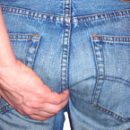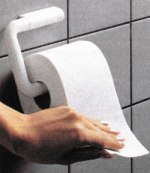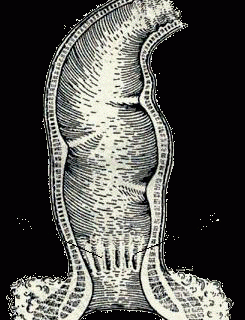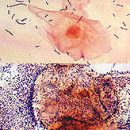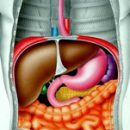Anal crack is one of the most frequent reasons for the appearance of pain in the anal area. Women are more often subject to this disease. More than a third of the patients appeal at the age of 18-50, although the disease can be observed at any age.
Content
Anal crack
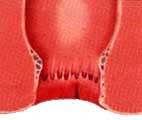 Anal crack (crack of the rear pass) – It is damage to the mucous membrane of the rectum at the location of the anal sphincter.
Anal crack (crack of the rear pass) – It is damage to the mucous membrane of the rectum at the location of the anal sphincter.
In 90% of cases, the crack is located on the posterior wall of the rear-ground channel.
The most frequent causes of the occurrence of anal crack are chronic constipation, injuries of the mucous membrane of foreign objects (for example, a bone from food), as well as anal sex.
The disease is found quite often. More than a third of the patients are in working age; Women suffer more often (more than 60% of all patients).
The predisposing diseases are colitis, proctosigmiditis, enterocolites, hemorrhoids, etc. Almost 70% of patients with cracks are combined with chronic diseases of the upper digestive tract (gastritis, ulcerative ulcer of the stomach and duodenum, cholecystitis). At the same percentage of patients there is a combination of anal crack and hemorrhoids.
Manifestations
The main symptoms of the anal crack:
- sharp pain during and after defecation;
- scarce bleeding during defecation (not always);
- Spasm and stress of sobs in the area of the rear pass (sphincter spasm).
Pronounced pain after the chair are preserved up to several hours, which leads to irritability, nervousness, sleep impaired. Patients with anal crack are afraid of a hike to the toilet and unconsciously delay the chair, which leads to a sealing of feet masses and even greater injury to the rear passage during defecation.
There are two forms of the disease, which are stages of one process and have a clinical course features: acute anal crack, chronic anal crack.
With a sharp crack, pain has clearly pronounced three-phase: short-term pain at the time of defecation, which is sometimes accompanied by small bleeding; Then the rest period lasting a few minutes and, finally, intense spastic pain for many hours. In most cases, sharp anal cracks are cured by conservative methods. After 3-4 weeks, in the absence of timely treatment, the disease passes into a chronic form. The chronic anal crack in the inspection differs from acute: the edges of the crack are thicken, a rough scar tissue appears, the scar cloth forms a scar cloth at the distal edge «Watchdog tubercle».
Pain in chronic anal crack arise, as a rule, after defecation, they are less intense or may not be absent. Blood selection and spafing spasm are saved. Itching itching and maceration in the perianal area can join.
In the absence of treatment of independent healing does not occur. The crack area increases, its edges are compacted, the ulcer (chronic anal crack) is formed, which manifests itself with aging pain and constipation. In the early term from the moment of the disease - recovery occurs significantly faster and may be an outpatient (without hospitalization in the hospital). In each case, the scheme of your treatment must be discussed with a doctor.


